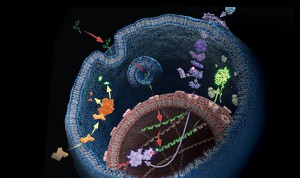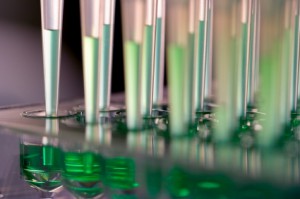Based on the Illuminations article by Dr. Terry Riss, from our Cellular Analysis group.
Choosing the most appropriate cell health assay for your experiment can be difficult. There are several factors to consider when choosing an assay: the question you are asking, the nature of your sample, the number of samples being tested, the required sensitivity, the nature of the sample, the plates and plate readers and the reagent costs.
What question are you asking?
The first, and perhaps most important factor to consider, is the question you need answered. What do you want to know at the end of the experiment? There are cell health assays available that specifically detect the number of living cells, the number of dead cells, and for assessing stress response mechanisms or pathways that may lead to cell death. Matching the assay endpoint to the information you need is vital to choosing the appropriate cell health assay.
What is your model system?
Your model system is critical to designing an effective and informative assay protocol. Cells in culture represent a heterogeneous population of individuals in different phases of the cell cycle. Exposing a population of cells in culture to a toxin or other treatment may result in the appearance of markers of cell stress or cell death that are transient. Using known positive and negative controls helps to establish a general understanding of the physiological condition of the cells throughout the course of the experiment. Periodic observation of cell morphology or measurement of markers using reagents compatible with living cultures (real-time analysis reagents) can provide early hints for when to implement endpoint assay chemistries.
Cells in culture are only a model system and are different than cells in their normal in vivo environment. Some researchers are now turning to 3D cell cultures to more closely mimic in vivo networks. Instead of growing in a monolayer on a plate surface, cells in 3D culture grow within a support matrix that allows them to interact with each other, forming cell:cell connections. This added complexity can present challenges for experimental design when performing cell based assays because assay reagents may have difficulty reaching the center of large microtissues, and lytic assays may not be able to disrupt all cells within the 3D system. Assays may need to be optimized for 3D systems, by reformulating reagents with stronger detergents or incorporating mechanical disruption or longer incubation times. Because the nature of the sample can vary depending on cell type and size of microtissue, the assay procedure should be validated for each culture model system.
How many samples do you need to assay?
If only one or a few samples need to be measured, manual counting of live or dead cells using a hemacytometer may be adequate. If large numbers of samples will be measured, assay procedures that use an add-mix-measure approach are the most efficient. For screening thousands of samples, choose assays that are sensitive enough to allow miniaturization into high-density plate formats (384- or 1536-well plates).
What kind of sensitivity do you require?
The sensitivity required is closely linked to the plate format (96-, 384- and 1536-well) and ultimately the number of cells used per sample. In general, the luminescent endpoint assays are more sensitive than assays based on detecting fluorescence or absorbance because of the minimal background luminescence that results in high signal:noise ratios. More sensitive assays can also detect molecules that are present in extremely small amounts, such as NADPH.
What volume will you be using?
The volume of assay reagent added to the cell culture needs to be considered. It should fit the plate well size, and if desired for HTS formats, the chemistry should be scalable.
What kind of plates and plate readers will you use?
If microscopic observations of cells is desired, clear-bottom plates are need. In general, opaque black plates are used for reduced background for fluorescent assays, and opaque white plates are used for optimum light output for luminescent assays. However the signal strength from most luminescent assays is such that black plates can be used. Using black plates for luminescent assays provides the most flexibility for combining fluorescent and luminescent assays from the same sample (multiplexing). Additional information about plates can be found here.
Instruments recording absorbance, fluorescence or luminescence are the most commonly used with cell health assays. Many modern plate readers can record multiple outputs. Having an appropriate instrument available is important for assay success. Also, for fluorescence-based assays, the correct excitation and emission filter sets are required to achieve optimum performance from the assay.
What are you willing to pay?
Usually there is a trade-off between the cost of the reagent and the quality of the assay or the convenience it provides to the user. Less costly reagents often have more complex procedures, limited sensitivity, or toxicity to cells in culture, and take longer to perform. Despite those general disadvantages, there may be many applications where less costly assays are suitable; however, care should be taken to avoid reagents that are cytotoxic when they can affect the assay results or limit the ability to multiplex with other assays. Quality-controlled reagents and assay kits are generally more expensive but often save time and cost in the long run in terms of repeated experiments or nonreplicable results.
After you have evaluated each of these factors you will be better able to make a smart choice of assay to get the best answers to your experimental questions.
Latest posts by Promega (see all)
- Soft Skills for the Science Lab: Develop Yourself with Promega - November 14, 2024
- The Role of Bioassays in Testing New Therapeutics for Canine Cancer - November 5, 2024
- Understanding the Promise of Immunotherapy in Veterinary Medicine - October 1, 2024


